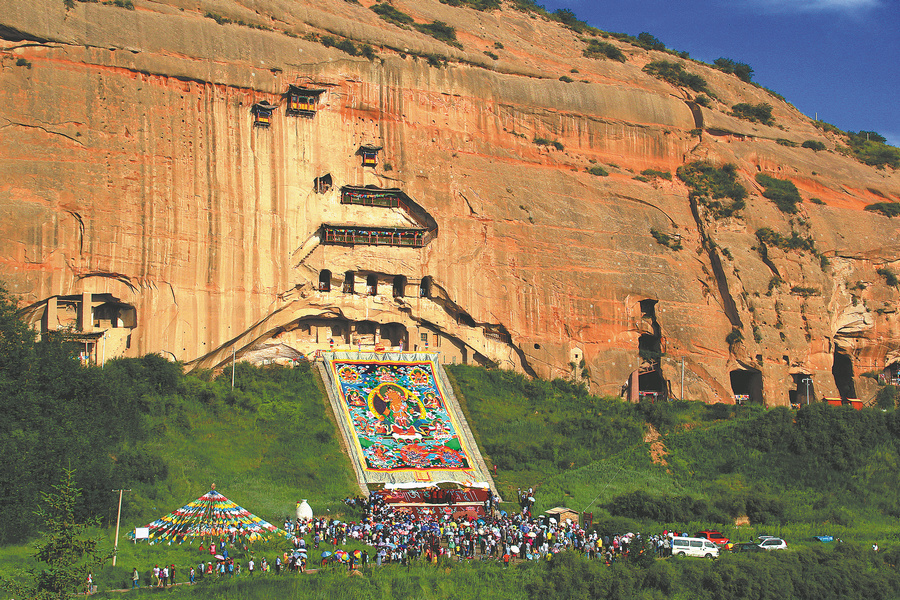Buddha's gaze into eternity
Son's devotion shines down for centuries in a grotto that still fascinates, Zhao Xu and Ma Jingna report.


Staying true to its role as a cultural melting pot, the Hexi Corridor was where both Tibetan and Han Buddhism flourished. A notable site for Tibetan Buddhism is the Mati (Horse's Hoof) Temple Grottoes in Zhangye, famously linked to King Gesar, a legendary Tibetan figure whose mount is said to have left its footprint there.
Carved into steep cliffs where birds nest in wind-eroded cavities, these grottoes stretch 30 kilometers and comprise seven small grotto groups. Some are difficult to access — in one case, visitors may need to climb on all fours to navigate the extremely narrow staircases built inside the mountain. These staircases lead to all 21 interconnected caves, which rise in a seven-story pagoda-like formation.
However, no grotto-viewing journey in the Hexi region is truly complete without witnessing the world-renowned Mogao Grottoes in Dunhuang — 735 caves carved into the northern face of Mingsha Mountain, stretching a total of 1,720 meters in an unbroken masterpiece of history and art.
The grottoes, very much like the ancient Silk Road, reached their heyday during the first half of the Tang rule from the early 7th to mid-8th centuries, when vision and valor combined to propel the Chinese dynasty to greatness, transforming its capital Chang'an (the modern-day Xi'an city in Shaanxi province) into a vibrant international metropolis.
The ingeniously constructed wooden temples and pagodas, the elaborate candleholders and incense burners, the divine music and mesmerizing dances once performed at court and in lavish banquets across Chang'an — all found their way into Dunhuang grotto paintings, converging into an ideal world resided by Buddhist immortals. The frescoes' historical value can never be overestimated given the fact that few Tang Dynasty paintings, and fewer pieces of architecture, have survived.


















